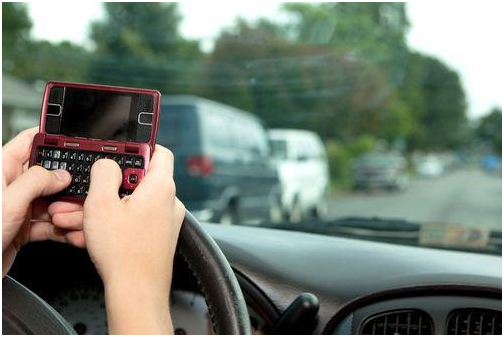The Emerging Problem of Distracted Driving
by Jim Stimpson, PhD, Associate Professor, Department of Health Services Research & Administration

Distracted driving from electronic device use, especially talking on a cell phone or sending text messages, has become a major public health threat. Talking on a cell phone while driving is estimated to raise the risk of collision by more than 30%, and those who text while driving are 23 times more likely than those who do not to have a crash. A recent study estimates that distracted driving from cell phone use and texting increased traffic deaths in the United States by 16,000 from 2001 to 2007.
The US Department of Transportation (DOT) created a website to inform the public about the national strategy to eliminate distracted driving (http://www.distraction.gov). The DOT’s public education campaign emphasizes several key messages:
Drivers simply can’t do two things at once. Drivers who use handheld devices while driving are more likely than those who do not to get into crashes.
Distracted driving is deadly behavior. Injuries and deaths occur when drivers do not pay attention.
Young drivers are especially at risk. Drivers younger than 20 years have the highest proportion of distraction-related fatal crashes.
Everyone is part of the solution. We must all put our electronic devices down while driving, set a good example for others, and ask others to do the same.
The DOT estimates that 5,500 people in the United States were killed and almost 500,000 were injured in accidents related to distracted driving in 2009. Eighteen percent of those fatal accidents involved the use of a cell phone. A free brochure, “Distracted Driving Shatters Lives,” produced by DOT and Consumer Reports National Research Center, is available at http://www.distraction.gov/files/for-media/2011/2011-03-04-distracted-driving-brochure-print.pdf.
Nebraska law prohibits drivers from using a wireless handheld device to read, write, or send written communications while driving. But this law can only be enforced as a secondary action, meaning that a driver must also be committing a primary offense, such as speeding, to be ticketed for texting. Nebraska law also prohibits drivers with a learner’s permit or a school permit from using a cell phone. But this law, too, can only be enforced as a secondary action.
It is unclear whether states have sufficient enforcement resources to effectively reduce distracted driving. Catching drivers in the act of texting is more difficult than catching those who speed, run a red light, or drive while intoxicated. As states continue to adopt or amend state laws restricting use of electronic devices, policymakers need a more comprehensive understanding of the impact of these laws to assess whether the current regulatory environment is responsive to reducing the hazards of distracted driving.

